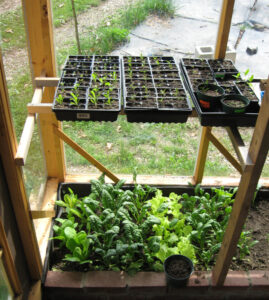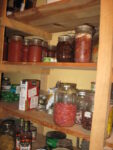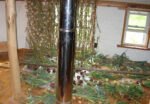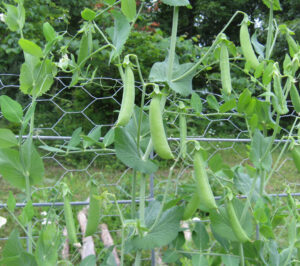A version of this column first ran in the Roane County (WV) Reporter and Times Record. Support local journalism! Subscribe to your local newspaper. This is the second column in a series. Read part 1 here.
 Last week we talked about why you might want to start a garden, and some considerations for planning it. Let’s say you did that, you acquired some seeds (or have them coming by mail order) and have staked out your garden space. What’s next?
Last week we talked about why you might want to start a garden, and some considerations for planning it. Let’s say you did that, you acquired some seeds (or have them coming by mail order) and have staked out your garden space. What’s next?
I recommend planning out your garden on paper. If you can find some graph paper, this makes it easy to keep things proportional. One advantage of having your garden on paper is that you can keep track of your efforts from year to year. For example, this is how I discovered that the beds to which I added leaf mold did better generally than the ones that got compost. It also helps with rotating crops, which you want to do to keep disease and insect problems down.
You may have seeds that need to be started in a greenhouse or on a windowsill, or on a table with lights over them. I use a mix of half peat moss and half sand to start seeds in; it’s soft and loose, and sterile so I don’t have weeds germinating and confusing the issue. Then I transplant the seedlings into individual cells in black plastic containers—these usually come as four- or six-packs. I use a richer mix when I transplant, including garden soil and compost—and I do get weeds, which I have to pluck out, along with watering my seedlings.
It’s time to acquire your seed potatoes, and nearly time to plant them. You may not have prepared your soil yet. It needs to be dry enough to work (an advantage of raised beds is that they dry out faster in the spring). Potato plants are damaged by frost, but it takes them a couple of weeks to get above ground—and if they do get frosted they’ll try again.
All you have to do to get potatoes ready for planting is to cut them into chunks, preferably with a couple of “eyes” or sprouts on each, and let them scab over for a day or two before planting; the scabbing isn’t absolutely necessary but you do want to cut big potatoes into several chunks. Put them in the ground with the sprouts facing up, nine to twelve inches apart, in rows as little as fifteen inches apart—but you want them at least four inches deep to avoid sun hitting the tubers, which causes them to get green, poisonous patches. If the rows are two feet apart you can “hill them up,” by hoeing dirt onto the young plants from the space between rows.
If you can’t find sweet potato slips, and you have sweet potatoes sprouting in a warm place, you can cut off the sprout end and suspend it over a jar of water on toothpicks or wires, with the sprouts up and part of the chunk in the water. Put the jar in a sunny windowsill. It should start growing roots into the water, and the sprouts should grow into vines. After a few weeks you pluck off the vines; sometimes the roots come with them, sometimes they don’t but either way you discard the potato chunk and put the vines, several of them, into a jar of water to grow on. They’ll make more roots.
By the way, when I say “discard” I mean put the potato chunk in your compost can, to go into the pile by your garden. Don’t send good organic matter to a landfill. Your garden wants it—I am certain of this.
I’ve told you how to plant potatoes but it’s a little too early—late April is good. It’s much too early to plant sweet potatoes, that’s more like late May. Is there anything you can plant directly in the ground now? Yes. Peas can go in as soon as you have a place ready for them (some varieties need support). Onions and leeks go in now (I use onion sets—they take forever to size up from seed). Plant lettuce, spinach and radishes now. Soon you can plant carrots, chard and beets.
Here’s a trick: I put up a fence down the middle of a different bed each year, and plant peas on one side in March. Before these are ripped out in June, I plant pole beans on the other side, so they both can use the fence. On either side I plant things that like a little shade: lettuce, spinach, celery and ginger.
Another trick; Plant your onions about five inches apart in rows a foot apart. In a month when they are up and easy to see, plant carrots in rows in between the onion rows. Supposedly the onions repel the carrot fly and the carrots repel the onion fly—all I know is that since I’ve been doing this I’ve been getting bigger onions and carrots, so I keep doing it.
Questions, objections and suggestions may be sent to wildfire@spectrumz.com.
Read part 3 here.













